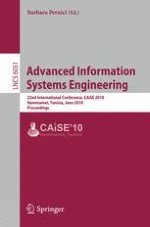2010 | Buch
Advanced Information Systems Engineering
22nd International Conference, CAiSE 2010, Hammamet, Tunisia, June 7-9, 2010. Proceedings
herausgegeben von: Barbara Pernici
Verlag: Springer Berlin Heidelberg
Buchreihe : Lecture Notes in Computer Science
